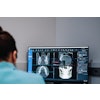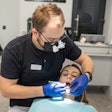A powerful carcinogen found in tobacco smoke -- dibenzo[a,l]pyrene -- can be used for oral cancer research in experimental animals, providing a new model for studying the tobacco-oral cancer link, according to researchers from New York University (NYU) and Penn State University.
The findings could ultimately facilitate research aimed at identifying new approaches to oral cancer prevention, according to Joseph Guttenplan, Ph.D., M.P.H., a professor of basic science and craniofacial biology at the NYU College of Dentistry, and Karam El-Bayoumy, Ph.D., a professor of biochemistry and molecular biology at Penn State University College of Medicine.
The study examined the impact of injecting low, medium, and high doses of dibenzo[a,l]pyrene into the mouths of 104 mice. The researchers examined 24 of the mice for mutagenesis and 80 for carcinogenesis. After 38 weeks, all the mice in the high-dose mutagenesis group developed excessive numbers of mutations in their oral tissue, and within one year, 31% of the high-dose carcinogenesis group displayed large tumors in their mouths.
The two-year study was sponsored by the National Institute of Dental and Craniofacial Research, part of the National Institutes of Health. Findings were presented at the recent American Association for Cancer Research meeting in Washington, DC.
Copyright © 2010 DrBicuspid.com



















